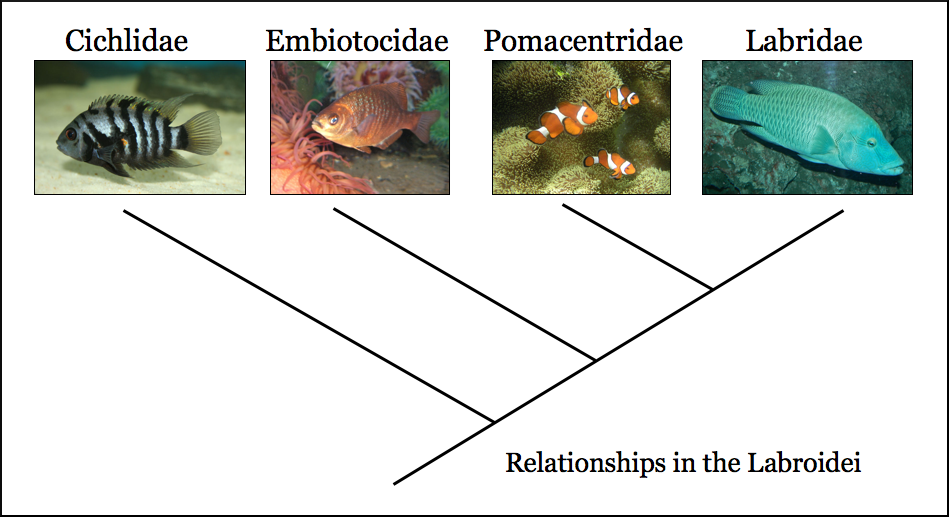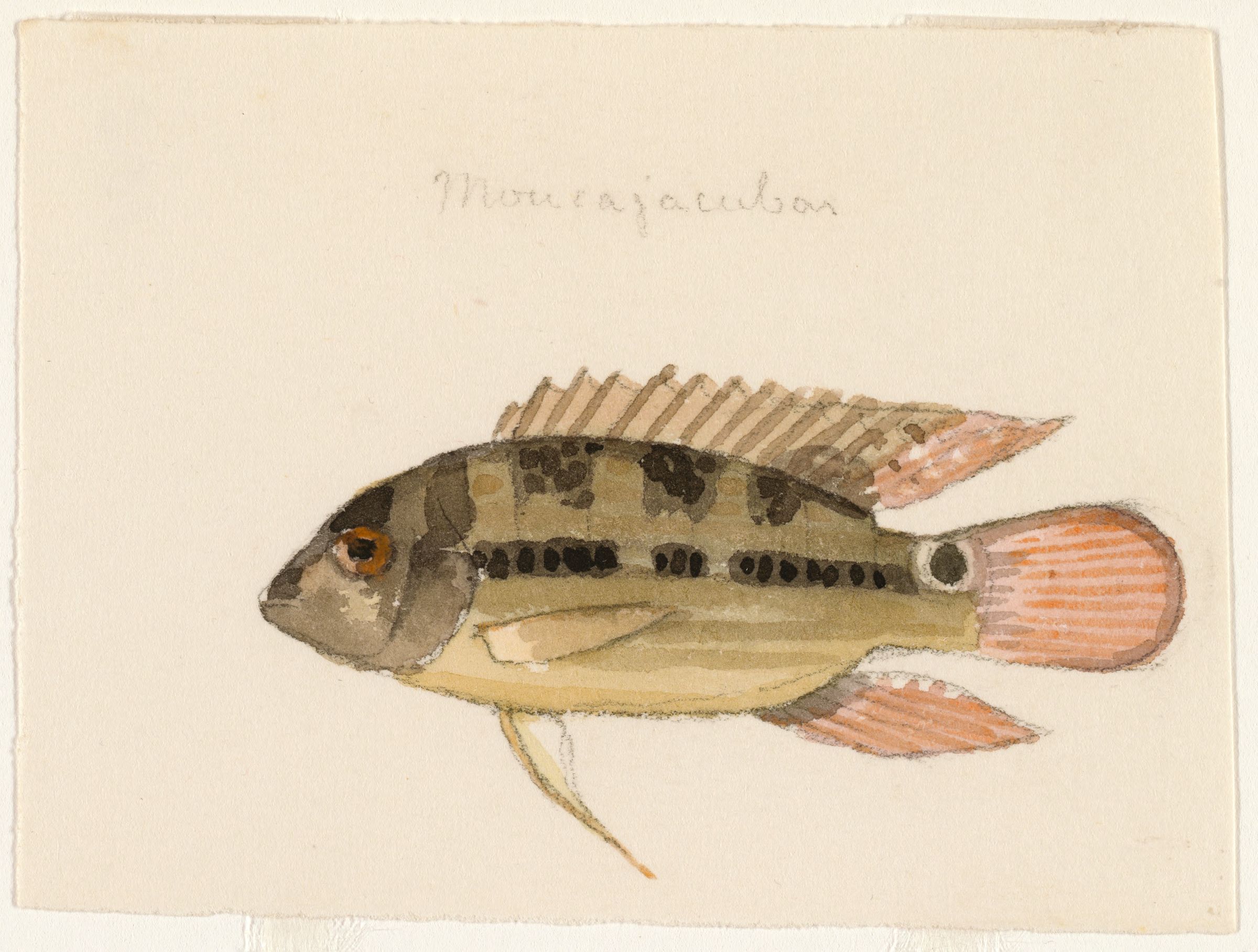|
Chaetobranchus
''Chaetobranchus'' is a small genus of cichlid fishes from South America where they are native to the Amazon Basin, Orinoco Basin and rivers in the Guianas. Species There are currently two recognized species in this genus: * '' Chaetobranchus flavescens'' Heckel, 1840 * '' Chaetobranchus semifasciatus'' Steindachner Franz Steindachner (11 November 1834 in Vienna – 10 December 1919 in Vienna) was an Austrian zoologist, ichthyologist, and herpetologist. He published over 200 papers on fishes and over 50 papers on reptiles and amphibians. Steindachner describ ..., 1875 References Chaetobranchini Cichlid genera Taxa named by Johann Jakob Heckel {{Cichlidae-stub ... [...More Info...] [...Related Items...] OR: [Wikipedia] [Google] [Baidu] |
Chaetobranchus Semifasciatus
''Chaetobranchus'' is a small genus of cichlid fishes from South America where they are native to the Amazon Basin, Orinoco Basin and rivers in the Guianas. Species There are currently two recognized species in this genus: * '' Chaetobranchus flavescens'' Heckel, 1840 * '' Chaetobranchus semifasciatus'' Steindachner Franz Steindachner (11 November 1834 in Vienna – 10 December 1919 in Vienna) was an Austrian zoologist, ichthyologist, and herpetologist. He published over 200 papers on fishes and over 50 papers on reptiles and amphibians. Steindachner describ ..., 1875 References Chaetobranchini Cichlid genera Taxa named by Johann Jakob Heckel {{Cichlidae-stub ... [...More Info...] [...Related Items...] OR: [Wikipedia] [Google] [Baidu] |
Chaetobranchini
Chaetobranchini is a tribe of the subfamily Cichlinae, the American cichlids. They are distributed from the river basin of the Orinoco and the Guianas south to the basins of the Río Paraná and Río Paraguay . The two recognised genera of the Chaetobranchini have been classified together with '' Astronotus'' in the subfamily Astronotinae but the consensus is that this genus forms the monogeneric tribe, the Astronotini, these two each being one of the seven tribes in Cichlinae. Characteristics The species in Chaetobranchini grow to lengths of in length and have an oval, laterally compressed body with a pointed head. They have small mouths and teeth, feed on plankton using filaments on their gill arches as a filter. The chaetobranchins possess a very reduced lower pharyngeal jaw which has elongated lateral processes, a keel and conical teeth. Chaetobranchines are also characterised by their long pointed pectoral fins, which extend alsmot to the end of the base of the anal fin ... [...More Info...] [...Related Items...] OR: [Wikipedia] [Google] [Baidu] |
Cichlid
Cichlids are fish from the family Cichlidae in the order Cichliformes. Cichlids were traditionally classed in a suborder, the Labroidei, along with the wrasses ( Labridae), in the order Perciformes, but molecular studies have contradicted this grouping. The closest living relative of cichlids is probably the convict blenny, and both families are classified in the 5th edition of ''Fishes of the World'' as the two families in the Cichliformes, part of the subseries Ovalentaria. This family is both large and diverse. At least 1,650 species have been scientifically described, making it one of the largest vertebrate families. New species are discovered annually, and many species remain undescribed. The actual number of species is therefore unknown, with estimates varying between 2,000 and 3,000. Many cichlids, particularly tilapia, are important food fishes, while others, such as the '' Cichla'' species, are valued game fish. The family also includes many popular freshwater ... [...More Info...] [...Related Items...] OR: [Wikipedia] [Google] [Baidu] |
Cichlid Genera
Cichlids are fish from the family Cichlidae in the order Cichliformes. Cichlids were traditionally classed in a suborder, the Labroidei, along with the wrasses ( Labridae), in the order Perciformes, but molecular studies have contradicted this grouping. The closest living relative of cichlids is probably the convict blenny, and both families are classified in the 5th edition of ''Fishes of the World'' as the two families in the Cichliformes, part of the subseries Ovalentaria. This family is both large and diverse. At least 1,650 species have been scientifically described, making it one of the largest vertebrate families. New species are discovered annually, and many species remain undescribed. The actual number of species is therefore unknown, with estimates varying between 2,000 and 3,000. Many cichlids, particularly tilapia, are important food fishes, while others, such as the '' Cichla'' species, are valued game fish. The family also includes many popular freshwater ... [...More Info...] [...Related Items...] OR: [Wikipedia] [Google] [Baidu] |
Johann Jakob Heckel
Johann Jakob Heckel (23 January 1790 – 1 March 1857) was an Austrian taxidermist, zoologist, and ichthyologist from Mannheim in the Electoral Palatinate. Life Though not a formally trained biologist, he worked his way up through the ranks to eventually become the director of the Fish Collection at the Naturhistorisches Museum in Vienna. For the most part, he was not a traveler or explorer like many of the scientists of the time, he remained in Vienna, where he studied and catalogued specimens sent to him from the field. Among those who brought specimens to him were Karl Alexander Hügel, Joseph Russegger and Theodor Kotschy — involving collection activities in Kashmir, the Middle East and northeastern Africa that greatly enriched the Vienna museum. Fish were his specialty and he worked with many of the greatest ichthyologists of his time including Cuvier, Valenciennes, Bonaparte, Müller, and Troschel. [...More Info...] [...Related Items...] OR: [Wikipedia] [Google] [Baidu] |
Genus
Genus ( plural genera ) is a taxonomic rank used in the biological classification of living and fossil organisms as well as viruses. In the hierarchy of biological classification, genus comes above species and below family. In binomial nomenclature, the genus name forms the first part of the binomial species name for each species within the genus. :E.g. '' Panthera leo'' (lion) and '' Panthera onca'' (jaguar) are two species within the genus ''Panthera''. ''Panthera'' is a genus within the family Felidae. The composition of a genus is determined by taxonomists. The standards for genus classification are not strictly codified, so different authorities often produce different classifications for genera. There are some general practices used, however, including the idea that a newly defined genus should fulfill these three criteria to be descriptively useful: # monophyly – all descendants of an ancestral taxon are grouped together (i.e. phylogenetic analysis should c ... [...More Info...] [...Related Items...] OR: [Wikipedia] [Google] [Baidu] |
South America
South America is a continent entirely in the Western Hemisphere and mostly in the Southern Hemisphere, with a relatively small portion in the Northern Hemisphere at the northern tip of the continent. It can also be described as the southern Subregion#Americas, subregion of a single continent called Americas, America. South America is bordered on the west by the Pacific Ocean and on the north and east by the Atlantic Ocean; North America and the Caribbean Sea lie to the northwest. The continent generally includes twelve sovereign states: Argentina, Bolivia, Brazil, Chile, Colombia, Ecuador, Guyana, Paraguay, Peru, Suriname, Uruguay, and Venezuela; two dependent territory, dependent territories: the Falkland Islands and South Georgia and the South Sandwich Islands; and one administrative division, internal territory: French Guiana. In addition, the ABC islands (Leeward Antilles), ABC islands of the Kingdom of the Netherlands, Ascension Island (dependency of Saint Helena, Asce ... [...More Info...] [...Related Items...] OR: [Wikipedia] [Google] [Baidu] |
Amazon Basin
The Amazon basin is the part of South America drained by the Amazon River and its tributaries. The Amazon drainage basin covers an area of about , or about 35.5 percent of the South American continent. It is located in the countries of Bolivia, Brazil, Colombia, Ecuador, Guyana, Peru, Suriname, and Venezuela. Most of the basin is covered by the Amazon rainforest, also known as Amazonia. With a area of dense tropical forest, this is the largest rainforest in the world. Geography The Amazon River begins in the Andes Mountains at the west of the basin with its main tributary the Marañón River and Apurimac River in Peru. The highest point in the watershed of the Amazon is the second biggest peak of Yerupajá at . With a length of about before it drains into the Atlantic Ocean, it is one of the two longest rivers in the world. A team of scientists has claimed that the Amazon is longer than the Nile, but debate about its exact length continues. The Amazon sys ... [...More Info...] [...Related Items...] OR: [Wikipedia] [Google] [Baidu] |
Orinoco River
The Orinoco () is one of the longest rivers in South America at . Its drainage basin, sometimes known as the Orinoquia, covers , with 76.3 percent of it in Venezuela and the remainder in Colombia. It is the fourth largest river in the world by discharge volume of water. The Orinoco River and its tributaries are the major transportation system for eastern and interior Venezuela and the Llanos of Colombia. The environment and wildlife in the Orinoco's basin are extremely diverse. Etymology The river's name is derived from the Warao term for "a place to paddle", itself derived from the terms ''güiri'' (paddle) and ''noko'' (place) i.e. a navigable place. History The mouth of the Orinoco River at the Atlantic Ocean was documented by Christopher Columbus on 1 August 1498, during his third voyage. Its source at the Cerro Delgado–Chalbaud, in the Parima range, was not explored until 453 years later, in 1951. The source, near the Venezuelan–Brazilian border, at ab ... [...More Info...] [...Related Items...] OR: [Wikipedia] [Google] [Baidu] |
The Guianas
The Guianas, sometimes called by the Spanish loan-word ''Guayanas'' (''Las Guayanas''), is a region in north-eastern South America which includes the following three territories: * French Guiana, an overseas department and region of France * Guyana, formerly known as British Guiana from 1831 until 1966, after the colonies of Berbice, Essequibo, and Demerara, taken from the Netherlands in 1814, were merged into a single colony * Suriname, formerly Dutch Guiana, until 1814 together with Berbice, Essequibo and Demerara In the wider context, the Guianas also includes the following two territories: * Guayana Region in eastern Venezuela ( Amazonas, Bolívar, and Delta Amacuro states), formerly the Guayana Province, alternatively known as Spanish Guayana * State of Amapá in northern Brazil, known as Portuguese Guiana (or Brazilian Guiana) History Pre-colonial period Before the arrival of European colonials, the Guianas were populated by scattered bands of native Ar ... [...More Info...] [...Related Items...] OR: [Wikipedia] [Google] [Baidu] |
Franz Steindachner
Franz Steindachner (11 November 1834 in Vienna – 10 December 1919 in Vienna) was an Austrian zoologist, ichthyologist, and herpetologist. He published over 200 papers on fishes and over 50 papers on reptiles and amphibians. Steindachner described hundreds of new species of fish and dozens of new amphibians and reptiles. At least seven species of reptile have been named after him. Work and career Being interested in natural history, Steindachner took up the study of fossil fishes on the recommendation of his friend Eduard Suess (1831–1914). In 1860 he was appointed to the position of director of the fish collection at the Naturhistorisches Museum, a position which had remained vacant since the death of Johann Jakob Heckel (1790–1857). (in German). Steindachner's reputation as an ichthyologist grew, and in 1868 he was invited by Louis Agassiz (1807–1873) to accept a position at the Museum of Comparative Zoology at Harvard University. Steindachner took part in the Has ... [...More Info...] [...Related Items...] OR: [Wikipedia] [Google] [Baidu] |






